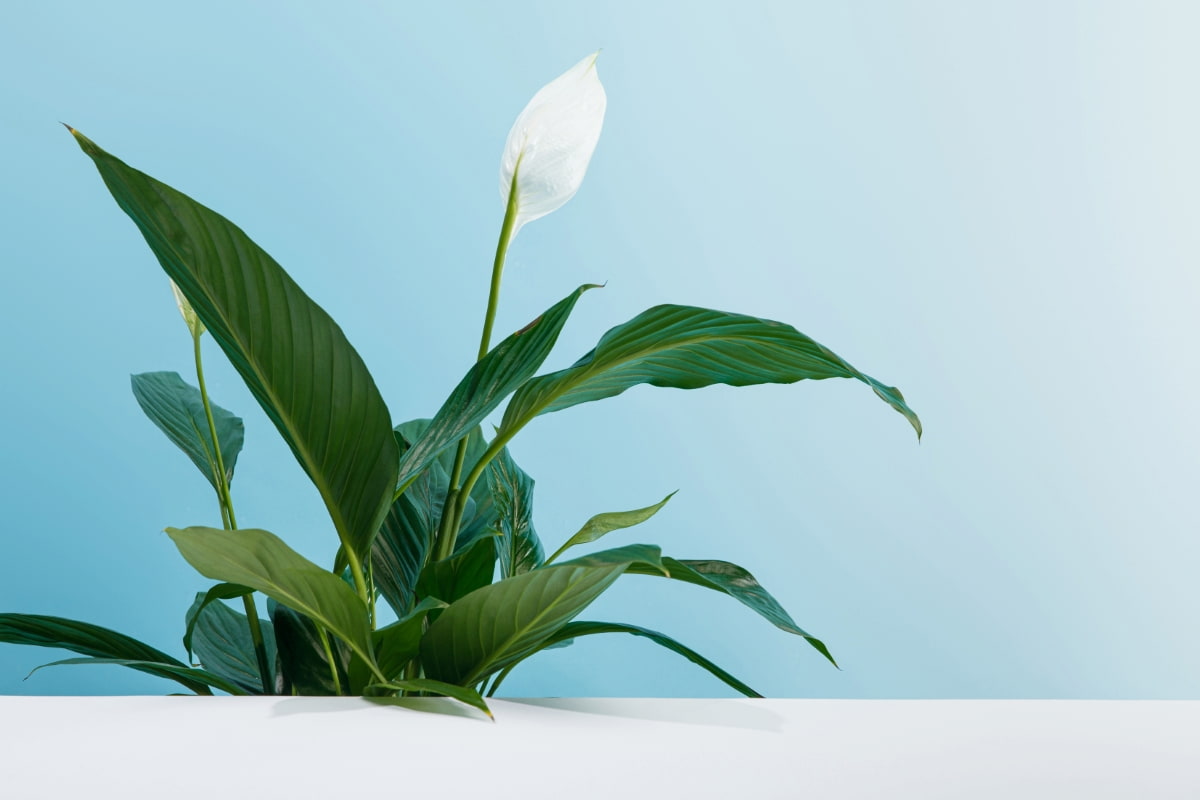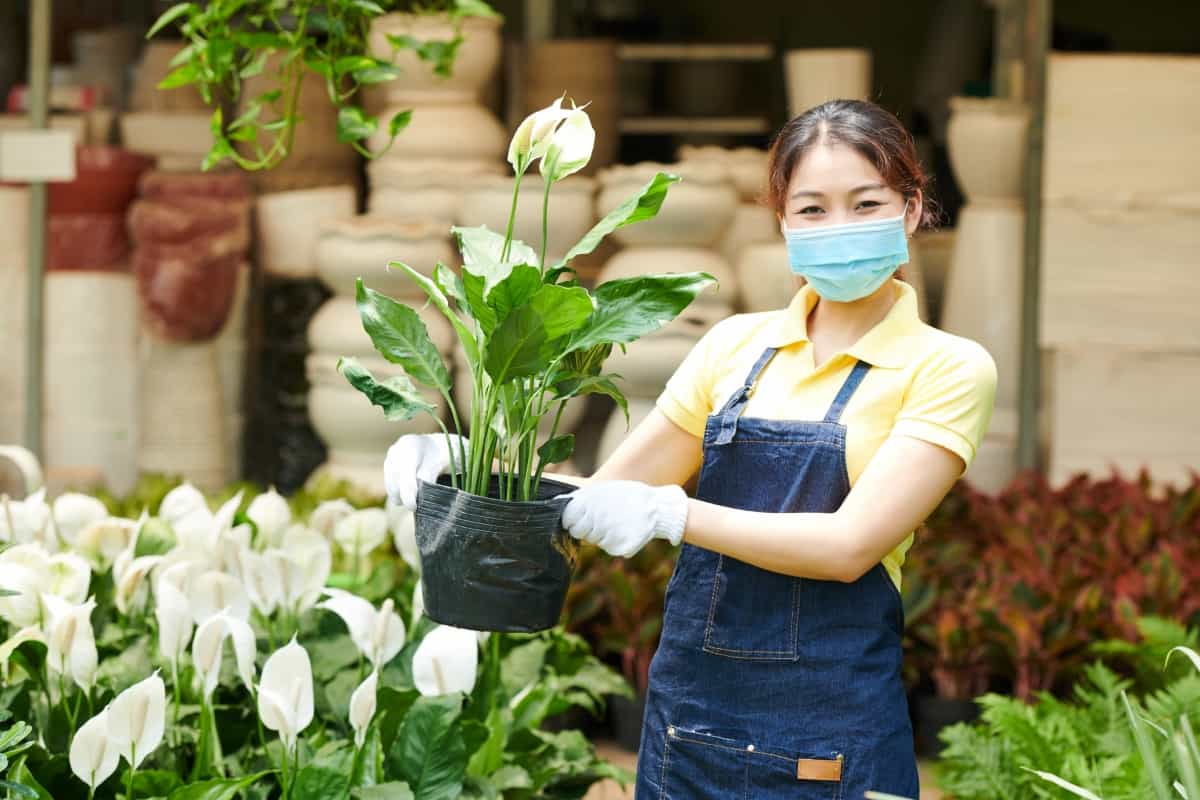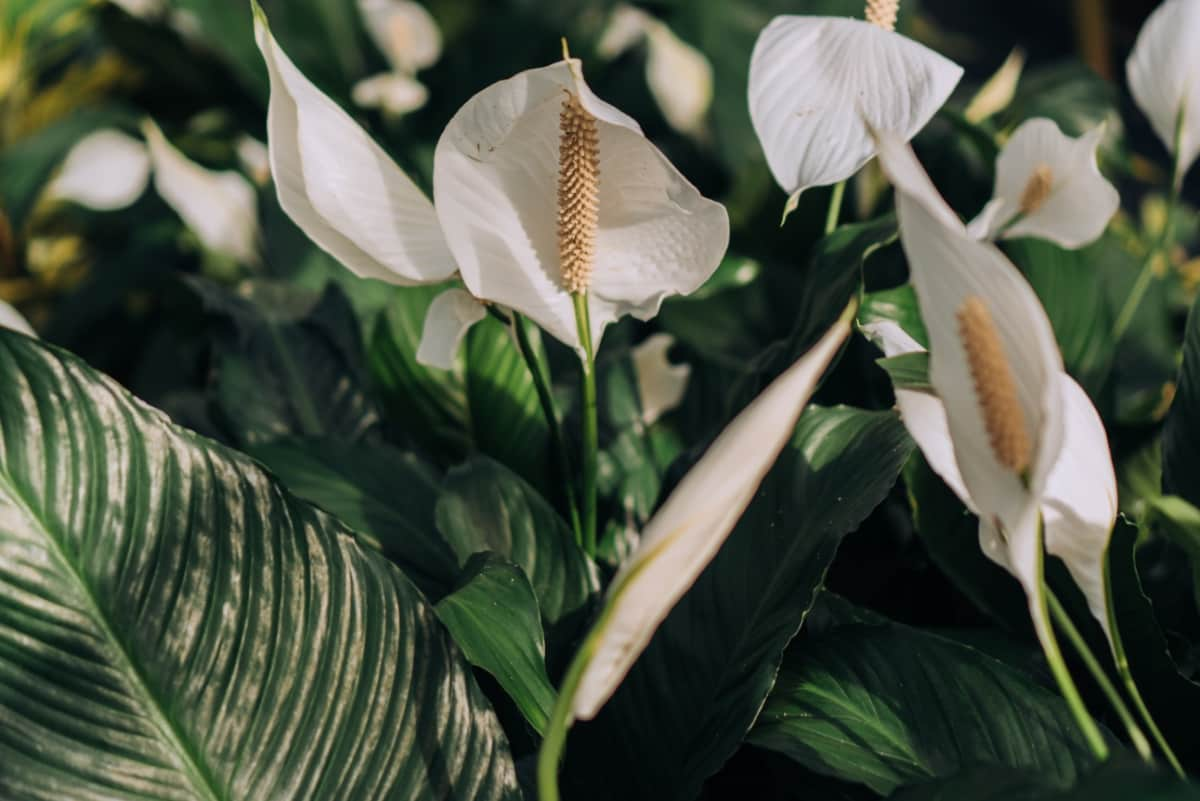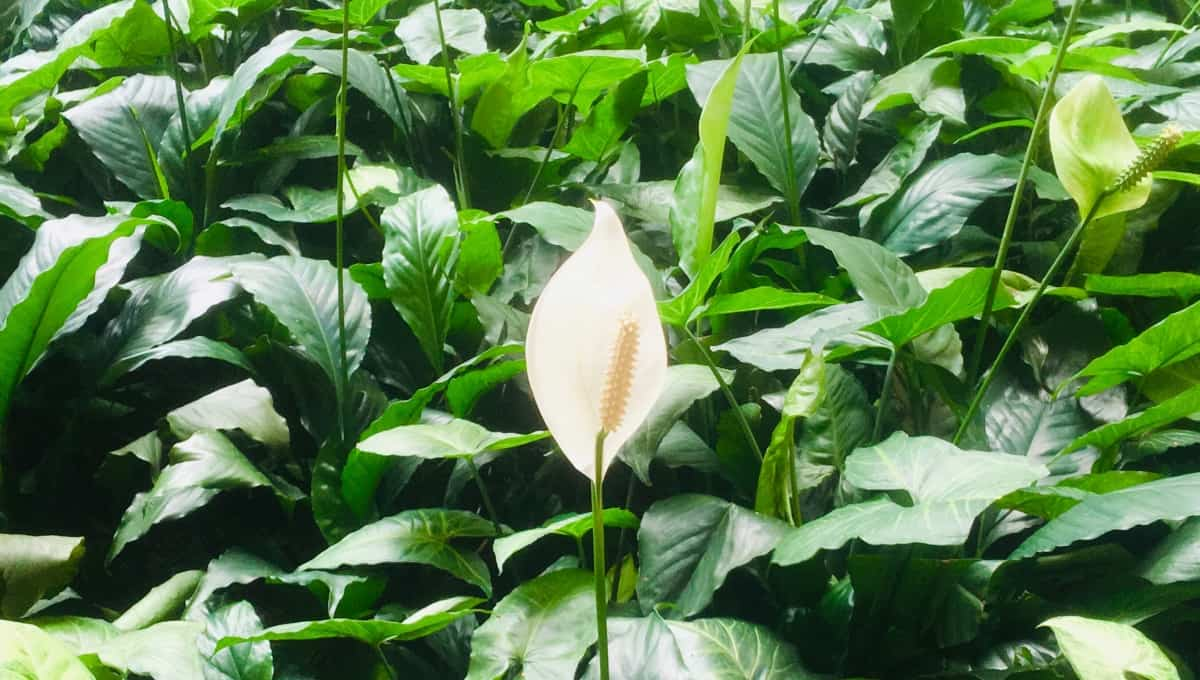Propagating plants can be a rewarding experience, especially regarding the beautiful Peace Lily. Its vibrant green leaves and elegant white flowers make the Peace Lily a popular choice for indoor gardens. Our step-by-step guide will show you how to propagate a Peace Lily from a cutting, so you can expand your collection or give it as a gift.

Propagating Peace Lily from Cutting
Understanding the Propagation Process of Peace Lily from Cuttings
The propagation process of Peace Lily from cuttings is a simple and effective way to expand your collection of these beautiful plants. To begin, select a healthy and mature Peace Lily plant. A stem 4-6 inches long, including a few leaves, should be cut using a clean, sharp knife or scissors.
You should remove most lower leaves from the cutting and leave only a few at the top. Cut ends of stems should be dipped in rooting hormone and planted in a small container with moist, well-draining soil. Ensure the cutting is kept in a warm, humid environment, away from direct sunlight. In a few weeks, roots should develop properly, signaling successful propagation.
Best Time and Conditions for Taking Peace Lily Cuttings
Taking the cuttings during the spring or summer months when the plant is actively growing is recommended. Choose a healthy, mature peace lily with several leaves to ensure a higher chance of success. The cuttings should be approximately 4-6 inches long and taken from the base of the plant using a sharp knife or pruning shears. Peace lily cuttings can root and grow into new plants with these optimal conditions.
Preparing the Tools and Materials for Peace Lily Propagation
- Sharp scissors or pruning shears: These will be used to carefully cut the Peace Lily’s stems.
- Clean gardening gloves: Wearing gloves will help protect your hands from any potential irritants.
- Clean, sterile pots: Use pots that have been thoroughly cleaned and sterilized to control the spread of diseases or pests.
- Well-draining potting mix: Choose a high-quality mix that provides good drainage for the newly propagated plants.
- Propagation hormone: This optional item can promote root growth in the cuttings.
- Watering can or spray bottle: These tools will provide moisture to the cuttings during the rooting process.
- Clear plastic bags or plastic wrap: Covering the cuttings with plastic will create a humid environment, which aids in rooting.
Step-By-Step Guide to Taking Cuttings from A Peace Lily Plant
- Start by selecting a healthy Peace lily plant with mature leaves and strong stems.
- Prepare a clean pruning shears or a sharp knife for taking the cuttings.
- Locate a node on the stem where the leaf attaches to the stem.
- Make a clean cut just below the node, ensuring the cutting is 4-6 inches long.
- Remove lower leaves from the cutting, leaving only a few at the top.
- Use a well-draining potting soil of perlite and peat moss in a small container.
- A rooting hormone can be dipped into the cut end to promote root development.
- Ensure that at least one node of the cutting is below the surface of the potting mix before inserting the cutting.
- Place the stem cutting in a warm and bright spot away from direct sunlight exposure and water it lightly.
- Keep the cutting moist by misting it regularly.
- It should take a few weeks for the cutting to develop roots.
- The stem cutting should be transplanted into a larger pot with regular soil once the roots have been established.
In case you missed it: 10 Common Problems With Peace Lily Plants: Treatment and Solutions

Properly Preparing the Cutting for Successful Rooting
Properly preparing the cutting is crucial for the successful rooting of a Peace Lily. To begin, select a healthy stem from the mother plant. Make sure it has at least two nodes. Cut the stem just below a node with a clean, sharp knife. Leaves should be removed from the lower portion of the stem cutting. This will minimize moisture loss and encourage root development. Dip the cut end in a rooting hormone powder to promote root growth.
Creating an Optimal Environment for Rooting Peace Lily Cuttings
- Firstly, choose a well-draining potting mix that is rich in organic matter. This will provide the necessary nutrients and support for the cuttings to develop roots.
- Drainage holes should be present in the pot to prevent waterlogging. As peace lilies prefer warm temperatures, keep the temperature between 21-27°C.
- Cuttings should be placed in a bright location, but direct sunlight must be avoided as it can scorch the leaves.
- Keep the leaves moist by misting them regularly to reduce stress and maintain humidity. Finally, be patient and provide consistent care to help the cuttings establish strong root systems.
Caring for Newly Rooted Peace Lily Cuttings
- Once the cuttings have been planted in a suitable potting mix, provide them with the right conditions.
- Place the pot in a warm and well-lit area, but avoid direct sunlight.
- Keep the soil moist but not waterlogged, as excess water can lead to root rot.
- Mist the leaves occasionally to maintain humidity.
- Fertilize the cuttings every two weeks with a diluted balanced liquid fertilizer.
- Monitor for pests and remove any damaged or yellowing leaves.
- The newly rooted peace lily cuttings will thrive and eventually develop into beautiful, mature plants with proper care.
In case you missed it: Jade Plant Propagation: From Stem Cuttings, Leaf Cuttings, Division, and Offsets

Transferring Rooted Cuttings Into Individual Pots or Containers
- Ensure the pots have adequate drainage holes to allow excess water to escape.
- Prepare a well-draining potting mix. In most cases, peat moss, perlite, and vermiculite are used together.
- Carefully remove the rooted cuttings from their original container, not damaging the roots. Gently loosen the roots to encourage new growth.
- Place each rooted cutting in a pot, ensuring the roots are spread out evenly. Fill the pot with the prepared potting mix, ensuring that the top of the root ball is level with the top of the pot.
- The plants should be watered thoroughly after potting to eliminate any air pockets around their roots. Avoid overwatering,
Providing Adequate Care and Maintenance for Young Peace Lily Plants
- A Peace lily plant should be watered when the soil’s top inch layer feels dry, ensuring it is not overwatered or allowed to dry out completely.
- Misting their leaves or placing a tray of water nearby can help create the ideal environment for Peace lilies.
- Fertilizing every few months with a balanced houseplant fertilizer can provide the nutrients for healthy growth.
- Regularly removing any yellow or brown leaves and repotting when needed will promote optimal growth.
Troubleshooting Common Issues in Peace Lily Propagation from Cuttings
You can expand your collection or share plants with friends by propagating peace lilies from cuttings. However, some common issues may arise during the propagation process. One common problem is the failure of cuttings to root. This may be due to improper cutting techniques or using cuttings from unhealthy or stressed plants.
In case you missed it: How to Propagate Peperomia: From Leaf Cuttings, Stem Cuttings, Divisions, and in the Water

Another issue is the development of rot on the cuttings. When soil is contaminated or overwatered, this can occur. It is important to use clean and sharp tools to prevent these issues, select healthy plant material, and provide proper care and conditions for the cuttings.
Conclusion
propagating a Peace Lily from cuttings is a simple and rewarding process. This step-by-step guide will help you successfully create new plants from existing ones. With proper care and patience, the cutting will develop roots and become a beautiful new Peace Lily.
- Feed Your Flock for Less: Top 10 Tips to Save on Chicken Feed
- Ultimate Guide to Ossabaw Island Hog: Breeding, Raising, Diet, and Care
- Hatching Answers: The Top 10 Reasons Your Chickens Aren’t Laying Eggs
- Eggs and Economics: Breaking Down the Cost of Raising Backyard Chickens
- Defend Your Greens: Proven Methods to Keep Iguanas Out of Your Garden
- Ultimate Guide to Cinnamon Queen Chicken: A Comprehensive Guide for Beginners
- Ultimate Guide to California Tan Chicken: Breeding, Raising, Diet, Egg-Production and Care
- Ultimate Guide to Marsh Daisy Chicken: Breeding, Raising, Diet, and Care
- 10 Types of Chicken Farming Businesses You Can Start for Profits